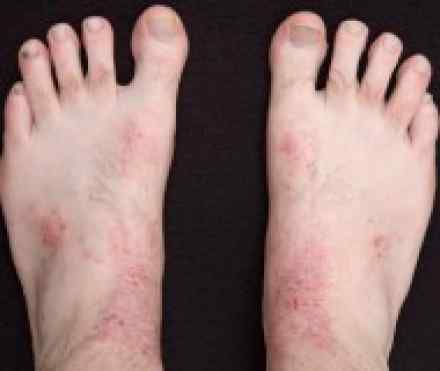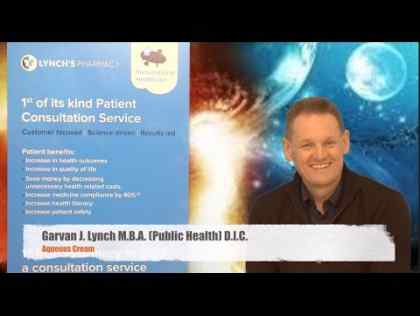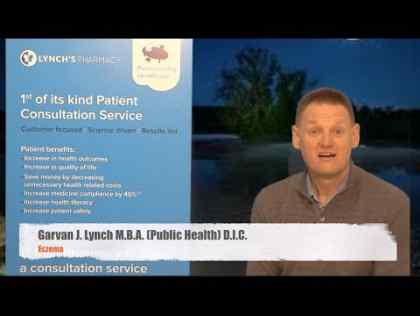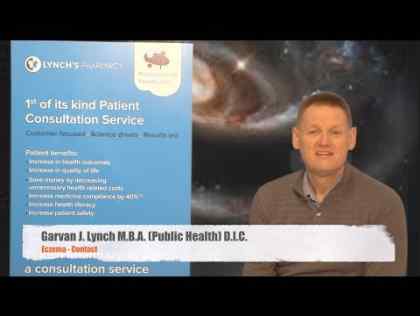
What is it?
- Atopic dermatitis (eczema) is an itchy inflammation of your skin. It's a long-lasting (chronic) condition that may be accompanied by asthma or hay fever. Eczema is most often seen in infants and children, but it can continue into adulthood or first appear later in life.
- Eczema may affect any area, but it classically appears on your arms and behind the knees. It tends to flare periodically and then subside. The cause of atopic dermatitis, or eczema, is unknown, but it may result from a malfunction in the body's immune system.
- Self-care measures, such as avoiding soaps or other irritants and applying creams or ointments, can help relieve itching.
Symptoms
Signs and symptoms of atopic dermatitis (eczema) include:
- Red to brownish-gray colored patches
- Itching, which may be severe, especially at night
- Small, raised bumps, which may leak fluid and crust over when scratched
- Thickened, cracked or scaly skin
- Raw, sensitive skin from scratching
Though the patches can occur anywhere, they most often appear on the hands and feet, in the front of the bend of the elbow, behind the knees, and on the ankles, wrists, face, neck and upper chest. Atopic dermatitis can also affect the skin around your eyes, including your eyelids. Scratching can cause redness and swelling around the eyes. Sometimes, rubbing or scratching in this area causes patchy loss of eyebrow hair and eyelashes.
Atopic dermatitis most often begins in childhood before age 5 and may persist into adulthood. For some, it flares periodically and then subsides for a time, even up to several years. Itching may be severe, and scratching the rash can make it even itchier. Breaking this itch-scratch cycle can be challenging.
Factors that worsen atopic dermatitis
Most people with atopic dermatitis also have Staphylococcus aureus bacteria growing on their skin. The staph bacteria multiply and can worsen symptoms, increasing the severity of the disease.
Other factors that can worsen signs and symptoms of atopic dermatitis include:
- Long, hot baths or showers
- Dry skin
- Stress
- Sweating
- Rapid changes in temperature
- Low humidity
- Solvents, cleaners, soaps or detergents
- Wool or man-made fabrics or clothing
- Dust or sand
- Cigarette smoke
- Certain foods, such as eggs, milk, fish, soy or wheat
Infantile eczema
- When atopic dermatitis occurs in infants, it's called infantile eczema. This condition may continue into childhood and adolescence.
- Infantile eczema often involves an oozing, crusting rash, mainly on the face and scalp, but it can occur anywhere. After infancy, the rash becomes dryer and tends to be red to brown-gray in color. In adolescence, the skin may be scaly or thickened and easily irritated. The intense itching may continue.
Causes
The exact cause of atopic dermatitis (eczema) is unknown, but is likely due to a combination of dry, irritated skin together with a malfunction in the body's immune system. Stress and other emotional disorders can worsen atopic dermatitis, but they don't cause it.
Atopic dermatitis often occurs along with allergies and frequently runs in families in which other family members have asthma or hay fever. Sometimes children who have signs and symptoms of atopic dermatitis later develop asthma or hay fever.
Complications
Complications of atopic dermatitis (eczema) include:
- Neurodermatitis. Prolonged itching and scratching may increase the intensity of the itch, possibly leading to neurodermatitis (lichen simplex chronicus). Neurodermatitis is a condition in which an area of skin that's frequently scratched becomes thick and leathery. The patches can be raw, red or darker than the rest of your skin. Persistent scratching can also lead to permanent scars or changes in skin color.
- Skin infections. Sometimes, scratching can break the skin and cause open sores and fissures that can become infected. A milder form of infection is impetigo, usually due to staphylococcal infection. Having atopic dermatitis predisposes you to this infection.
- Eye complications. Severe atopic dermatitis can also cause eye complications, which may lead to permanent eye damage. When these complications occur, itching in and around the eyelids becomes severe. Signs and symptoms of eye complications also include eye watering and inflammation of the eyelid (blepharitis) and the lining of the eyelid (conjunctivitis). If you suspect complications with your eyes, see your doctor promptly.
Diagnosis
There is no test to diagnose atopic dermatitis (eczema). Instead, it's typically diagnosed based on an examination of your skin and a review of your medical history. Your doctor will ask about the frequency and severity of the inflammation and how long you've had the symptoms.
Treatments and drugs
Treatments for atopic dermatitis (eczema) aim to reduce inflammation, relieve itching and prevent future flare-ups. Over-the-counter (nonprescription) anti-itch creams, along with other self-care measures, may help control mild atopic dermatitis.
Although atopic dermatitis is related to allergies, eliminating allergens is rarely helpful in clearing the condition. Occasionally, items that trap dust — such as feather pillows, down comforters, mattresses, carpeting and drapes — can worsen the condition. Allergy shots usually aren't successful in treating atopic dermatitis and might even make the condition worse.
Medications
Corticosteroid creams or ointments. Your doctor may recommend prescription corticosteroid creams or ointments to ease scaling and relieve itching. Some low-potency corticosteroid creams are available without a prescription, but you should always talk to your doctor before using any topical corticosteroid. Side effects of long-term or repeated use can include skin irritation or discoloration, thinning of the skin, infections, and stretch marks on the skin.
Antibiotics. You may need antibiotics if you have a bacterial skin infection or an open sore or fissure caused by scratching. Your doctor may recommend taking antibiotics for a short time to treat an infection or for longer periods of time to reduce bacteria on your skin and to prevent recurrent infections.
Oral antihistamines. If itching is severe, oral antihistamines may help. Diphenhydramine (Benadryl, others) can make you very sleepy and may be helpful at bedtime. If your skin cracks open, your doctor may prescribe mildly astringent wet dressings to prevent infection.
Oral corticosteroids. For more severe cases, your doctor may prescribe a short-course of oral corticosteroids, such as prednisone, to reduce inflammation and to control symptoms. These medications are effective but can't be used long term because of potential serious side effects, which include cataracts, loss of bone mineral (osteoporosis), muscle weakness, decreased resistance to infection, high blood pressure and thinning of the skin.
Immunomodulators. A class of medications called immunomodulators, such as tacrolimus (Protopic) and pimecrolimus (Elidel), affects the immune system and may help maintain normal skin texture and reduce flares of atopic dermatitis. This prescription-only medication is approved for children over the age of 2 and for adults. Due to possible concerns about the effect of these medications on the immune system when used for prolonged periods of time, the Food and Drug Administration recommends that Elidel and Protopic be used only when other treatments have failed, or if someone can't tolerate other treatments.
Light therapy (phototherapy)
As the name suggests, this treatment uses natural or artificial light. The simplest and easiest form of phototherapy involves exposing your skin to controlled amounts of natural sunlight. Other forms of light therapy include the use of artificial ultraviolet A (UVA) or ultraviolet B (UVB) light either alone or in combination with medications.
Though effective, long-term light therapy has many harmful effects, including premature skin aging and an increased risk of skin cancer. For these reasons, it's important to consult your doctor before using light exposure as treatment for atopic dermatitis. Your doctor can advise you on possible advantages and disadvantages of light exposure in your specific situation.
Infantile eczema
Treatment for infantile eczema includes identifying and avoiding skin irritations, avoiding extreme temperatures, and using bath oils, lotions, creams or ointments to lubricate your baby's skin.
See your baby's doctor if these measures don't improve the rash or if the rash looks infected. Your baby may need a prescription medication to control the symptoms or to treat the infection. Your doctor may recommend an oral antihistamine to help lessen the itch and to cause drowsiness, which may be helpful for nighttime itching and discomfort.
Lifestyle and home remedies
To help reduce itching and soothe inflamed skin, try these self-care measures:
- Try to identify and avoid triggers that worsen the inflammation. Rapid changes of temperature, sweating and stress can worsen the condition. Avoid direct contact with wool products, such as rugs, bedding and clothes, as well as harsh soaps and detergents.
- Apply an anti-itch cream or calamine lotion to the affected area. A nonprescription hydrocortisone cream, containing at least 1 percent hydrocortisone, can temporarily relieve the itch. A nonprescription oral antihistamine, such as diphenhydramine (Benadryl, others), may be helpful if itching is severe.
- Avoid scratching whenever possible. Cover the itchy area if you can't keep from scratching it. Trim nails and wear gloves at night.
- Apply cool, wet compresses. Covering the affected area with bandages and dressings can help protect the skin and prevent scratching.
- Take a warm bath. Sprinkle the bath water with baking soda, uncooked oatmeal or colloidal oatmeal — a finely ground oatmeal that is made for the bathtub (Aveeno, others). Or, add 1/2 cup (118 milliliters) of bleach to a 40 gallon (151 liter) bathtub filled with warm water. The diluted bleach bath is thought to kill bacteria that grow on the skin.
- Choose mild soaps without dyes or perfumes. Be sure to rinse the soap completely off your body.
- Moisturize your skin. Use an oil or cream to seal in moisture while your skin is still damp from a bath or shower. Pay special attention to your legs, arms, back and the sides of your body. If your skin is already dry, consider using a lubricating cream.
- Use a humidifier. Hot, dry indoor air can parch sensitive skin and worsen itching and flaking. A portable home humidifier or one attached to your furnace adds moisture to the air inside your home. Portable humidifiers come in many varieties. Choose one that meets your budget and any special needs. And be sure to keep your humidifier clean to ward off bacteria and fungi.
- Wear cool, smooth-textured cotton clothing. Avoid clothing that's rough, tight, scratchy or made from wool. This will help you avoid irritation. Also, wear appropriate clothing in hot weather or during exercise to prevent excessive sweating.
Alternative medicine
Many alternative therapies — including chamomile, evening primrose oil, witch hazel extract and borage seed oil — have been touted as possible ways to treat atopic dermatitis (eczema). However, there's no conclusive evidence that any of these alternative therapies are effective.
If you're considering dietary supplements or other alternative therapy to treat atopic dermatitis, consult your doctor. He or she can help you weigh the pros and cons of specific alternative therapies.
Prevention
Avoiding dry skin may be one factor in helping prevent future bouts of dermatitis. These tips can help you minimize the drying effects of bathing on your skin:
- Bathe less frequently. Most people who are prone to atopic dermatitis don't need to bathe daily. Try going a day or two without a shower or bath. When you do bathe, limit yourself to 15 to 20 minutes, and use warm, rather than hot, water. Using a bath oil also may be helpful.
- Use only certain soaps or synthetic detergents. Choose mild soaps that clean without excessively removing natural oils. Deodorant and antibacterial soaps may be more drying to your skin. Use soap only on your face, underarms, genital areas, hands and feet. Use clear water elsewhere.
- Dry yourself carefully. Brush your skin rapidly with the palms of your hands, or gently pat your skin dry with a soft towel after bathing.
- Moisturize your skin. Moisturizers provide a seal over your skin to keep water from escaping. Thicker moisturizers work best, such as over-the-counter brands Cetaphil and Eucerin. You may also want to use cosmetics that contain moisturizers. If your skin is extremely dry, you may want to apply an oil, such as baby oil, while your skin is still moist. Oil has more staying power than moisturizers do and prevents the evaporation of water from the surface of your skin.
References:
http://www.dermnetnz.org/dermatitis/atopic.html
https://www.aad.org/public/diseases/eczema/atopic-dermatitis
https://en.wikipedia.org/wiki/Atopic_dermatitis
http://www.niams.nih.gov/Health_Info/Atopic_Dermatitis/atopic_dermatitis_ff.asp
https://nationaleczema.org/eczema/child-eczema/atopic-dermatitis-in-children/atopic-dermatitis/







